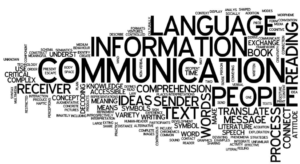A comprehensive communication plan is the backbone of project success
Good communication is a critical part of good project management. Effective communication is the bedrock upon which the rest of the project rests; without effective communication, delivery can be compromised, and deadlines missed.
Within a project environment, it’s usual to pull together your approach to communications into one cohesive plan. This step should not be skipped, as it’s a vital part of the project landscape.
How to produce a communication plan
A multi-step approach can be helpful in drawing together your communication plan:
- Define your project’s communications needs. These will be different for every project depending on size, the type of project, the requirements of the client or stakeholders, etc. Find out whether there are any particular preferences for types of communication that you need to bear in mind, and be clear about the goals of the plan- who are you trying to keep informed? What would the outcome of your communications ideally be (informed stakeholders, agreement on outcomes, etc.)?
- Consider your communication methods. It’s easy to overload people with multiple emails that aren’t relevant to them, for example, where a snapshot newsletter or weekly round-up might be more appropriate. Plan to convene meetings when you need them, and ensure that the correct people are invited (not just automatically everyone on the project team). If you’re working with a company with a 100% remote workforce, then you’ll be thinking about online information dissemination. If it’s a client who prefers to do business face-to-face, then you’ll be planning some in-person meetings and briefings to suit their style of working.
- Set a frequency for the methods of communication that you’ve chosen. This might be a daily email, twice-weekly phone call, and a weekly project meeting, for example, or it might look very different to this. It all depends on the outcomes of your thinking to points 1 and 2, because the appropriate frequency will differ for each project. Setting a frequency and recording it in the project plan should reduce the number of ad hoc requests for updates that you receive, because everyone will know when the next information is due to be available.
- Identify the person responsible for creating and sharing each of the types of communication you would like to use, and ensure that they know that they’re responsible for it. This builds accountability and ownership within the project team.
- Record the outcomes of all of these steps in a communication plan template, and share it widely. This is the guiding document which will set the tone and expectations for communications and it’s therefore important that all project stakeholders agree and adhere to it.
Some of the benefits of a communication plan
A good communication plan will help your project run smoothly and may make it less likely for unforseen problems to catch you by surprise:
Shared goals and expectations
At the start of a project, it’s important that goals and outcomes are shared and agreed upon amongst all stakeholders. Both the project team and the client need to agree, and the project outcomes should be explicitly recorded as part of the project planning paperwork. A good communication plan shares this information with all stakeholders to ensure that everyone is on the same page about goals and outcomes.
Relationship-building
The communication plan defines the cadence of communication, so that the client knows when to expect updates on progress. This is a critical element of stakeholder management, because clear and reliable communications help build the relationship between the project team and the client.
Enhanced project planning
Drawing together a communications plan at an early stage can positively impact the project planning process, which can be very helpful given the importance of project planning in project management. The process of writing a communications plan can highlight gaps in project planning. For example, the need to create a timetable and structure for communication can lead to the project plan being revised and tightened, to ensure that the requisite information will be available.
How often should you communicate?
The frequency of communication within a project environment will vary for different channels. Each channel can be categorized as verbal, written, electronic, or face-to-face, and it’s essential to ensure that your plan is clear about the frequency for each. For example:
- In-person briefings: verbal and face-to-face. These could be daily or weekly depending on client demand; these are often more informal than other communications methods
- Emails: written and electronic. These could be daily or weekly depending on client demand and often act as the most frequent form of communication as they doesn’t require any in-person live attendance for the audience
- Check-in meetings: verbal, written, face-to-face. Categorized as both verbal and written because they will generate a written record of what took place. Often held weekly with the core project team, with a focus on highlighting main elements of progress. More resource-intensive as meetings require all participants to be available at the same time, even if held remotely
- Major milestone meetings: verbal, written, face-to-face. Once again categorized as both verbal and written, as minutes will be produced to document outcomes. Frequency as per the requirements of the project plan, with wide attendance of project stakeholders and led by the project manager.
DRMcNatty can help produce an industry-leading communications plan
With decades of experience working on projects with clients of all sizes, DRMcNatty has an excellent knowledge of communications plan best practices. If you would benefit from a conversation about what should be included in the plan for your project, then get in touch with our friendly experts, and talk through your specific requirements in more detail.








